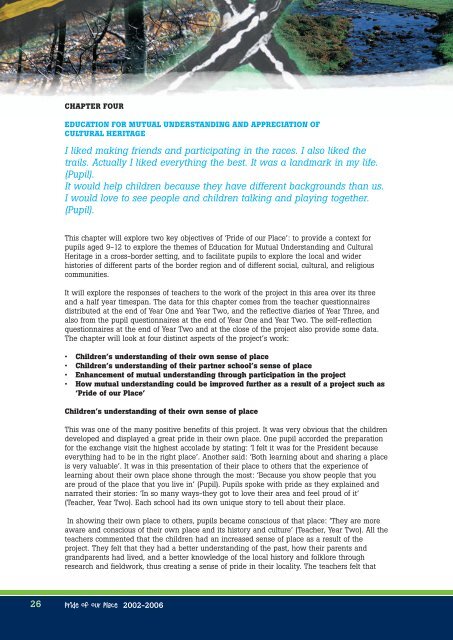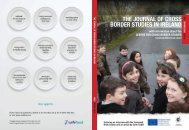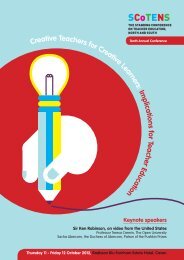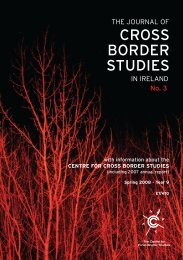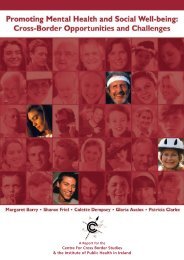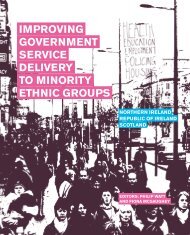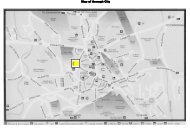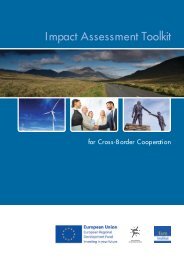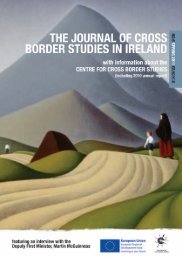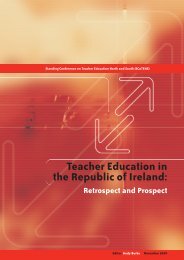PRIDE OF OUR PLACE - The Centre for Cross Border Studies
PRIDE OF OUR PLACE - The Centre for Cross Border Studies
PRIDE OF OUR PLACE - The Centre for Cross Border Studies
- No tags were found...
You also want an ePaper? Increase the reach of your titles
YUMPU automatically turns print PDFs into web optimized ePapers that Google loves.
CHAPTER F<strong>OUR</strong>EDUCATION FOR MUTUAL UNDERSTANDING AND APPRECIATION <strong>OF</strong>CULTURAL HERITAGEI liked making friends and participating in the races. I also liked thetrails. Actually I liked everything the best. It was a landmark in my life.(Pupil).It would help children because they have different backgrounds than us.I would love to see people and children talking and playing together.(Pupil).This chapter will explore two key objectives of ‘Pride of our Place’: to provide a context <strong>for</strong>pupils aged 9-12 to explore the themes of Education <strong>for</strong> Mutual Understanding and CulturalHeritage in a cross-border setting, and to facilitate pupils to explore the local and widerhistories of different parts of the border region and of different social, cultural, and religiouscommunities.It will explore the responses of teachers to the work of the project in this area over its threeand a half year timespan. <strong>The</strong> data <strong>for</strong> this chapter comes from the teacher questionnairesdistributed at the end of Year One and Year Two, and the reflective diaries of Year Three, andalso from the pupil questionnaires at the end of Year One and Year Two. <strong>The</strong> self-reflectionquestionnaires at the end of Year Two and at the close of the project also provide some data.<strong>The</strong> chapter will look at four distinct aspects of the project’s work:• Children’s understanding of their own sense of place• Children’s understanding of their partner school’s sense of place• Enhancement of mutual understanding through participation in the project• How mutual understanding could be improved further as a result of a project such as‘Pride of our Place’Children’s understanding of their own sense of placeThis was one of the many positive benefits of this project. It was very obvious that the childrendeveloped and displayed a great pride in their own place. One pupil accorded the preparation<strong>for</strong> the exchange visit the highest accolade by stating: ‘I felt it was <strong>for</strong> the President becauseeverything had to be in the right place’. Another said: ‘Both learning about and sharing a placeis very valuable’. It was in this presentation of their place to others that the experience oflearning about their own place shone through the most: ‘Because you show people that youare proud of the place that you live in’ (Pupil). Pupils spoke with pride as they explained andnarrated their stories: ‘In so many ways-they got to love their area and feel proud of it’(Teacher, Year Two). Each school had its own unique story to tell about their place.In showing their own place to others, pupils became conscious of that place: ‘<strong>The</strong>y are moreaware and conscious of their own place and its history and culture’ (Teacher, Year Two). All theteachers commented that the children had an increased sense of place as a result of theproject. <strong>The</strong>y felt that they had a better understanding of the past, how their parents andgrandparents had lived, and a better knowledge of the local history and folklore throughresearch and fieldwork, thus creating a sense of pride in their locality. <strong>The</strong> teachers felt that26 Pride of our Place 2002-2006


